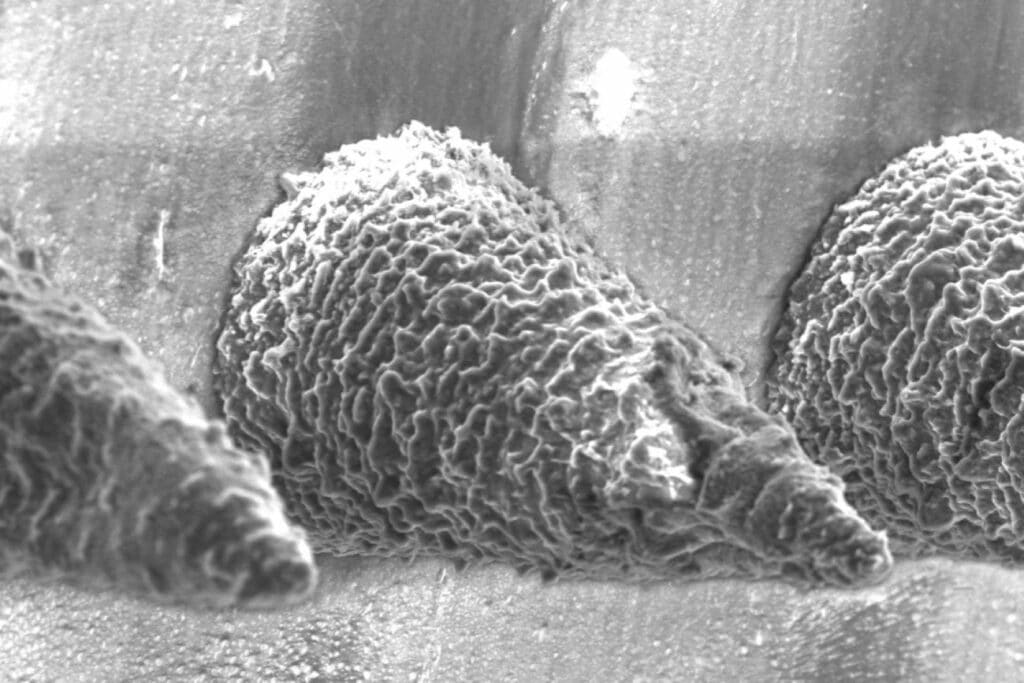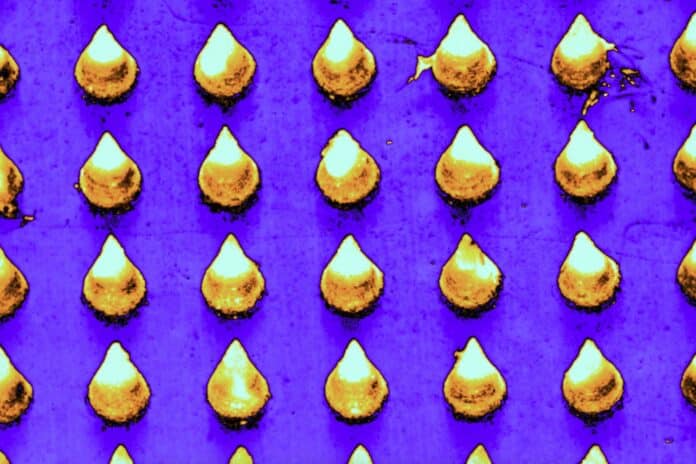Alopecia areata is an autoimmune disorder that causes hair loss and affects people of all ages, including children. There is no effective treatment for this type of hair loss.
Researchers at MIT, Brigham and Women’s Hospital, and Harvard Medical School have developed a potential new treatment that includes a microneedle patch that can be painlessly applied to the scalp and releases drugs that help to rebalance the immune response at the site, halting the autoimmune attack.
Scientists observed that while this treatment avoided systemic immunological responses elsewhere in the body, it allowed hair to regenerate and significantly reduced inflammation at the treatment site in a mouse trial. An adaptation of this approach could also treat other autoimmune skin conditions such as vitiligo, atopic dermatitis, and psoriasis.
Natalie Artzi, a principal research scientist in MIT’s Institute for Medical Engineering and Science, an associate professor of medicine at Harvard Medical School and Brigham and Women’s Hospital, and an assistant faculty member at the Wyss Institute of Harvard University said, “This innovative approach marks a paradigm shift. Rather than suppressing the immune system, we’re now focusing on regulating it precisely at the site of antigen encounter to generate immune tolerance.”
The study’s microneedle patches are composed of polyethylene glycol (PEG) and hyaluronic acid, both biocompatible and frequently utilized in medical applications. This technique allows medications to be delivered since creams administered topically cannot penetrate the epidermis’ protective outer layer.
Artzi said, “This polymer formulation allows us to create highly durable needles capable of effectively penetrating the skin. Additionally, it gives us the flexibility to incorporate any desired drug.”
The patches were loaded with a mixture of cytokines, CCL-22, and IL-2, specifically for this investigation. When these immunological chemicals work together, they can attract regulatory T cells, which multiply and reduce inflammation. Additionally, these cells teach the immune system to cease attacking hair follicles by teaching that they are not foreign antigens.

According to the researchers, the mice administered this patch every other day for three weeks showed significantly reduced inflammation and a more significant number of regulatory T cells at the location. At such locations, hair could grow back, which persisted for a few weeks after the treatment. The fact that the regulatory T cell counts in these mice’s lymph nodes and spleen remained unchanged suggests that the treatment was limited to the area where the patch was placed.
In further trials, the scientists implanted human skin onto mice with immune systems tailored to humans. The administration of microneedles in these mice expanded regulatory T cells and decreased inflammation.
The purpose of the microneedle patches, according to the researchers, was to release the medication payload while simultaneously gathering samples that might be utilized to track the effectiveness of the treatment. After penetrating the skin, hyaluronic acid causes the needles to enlarge approximately ten times, enabling them to absorb interstitial fluid from the skin containing immunological cells and macromolecules.
Scientists can detect the numbers of regulatory T cells and inflammatory markers in samples by analyzing them after the patch is removed. This could be useful for monitoring patients who might receive this treatment in the future.
Journal References:
- Nour Younis, Núria Puigmal, Abdallah El Kurdi et al. Microneedle-mediated Delivery of Immunomodulators Restores Immune Privilege in Hair Follicles and Reverses Immune-Mediated Alopecia. Advanced Materials. DOI: 10.1002/adma.202312088
- Younis, Nour; Puigmal, Núria; Kurdi, Abdallah El; Badaoui, Andrew; Zhang, Dongliang. Microneedle‐mediated Delivery of Immunomodulators Restores Immune Privilege in Hair Follicles and Reverses Immune‐Mediated Alopecia. Advanced Materials. Paper.
